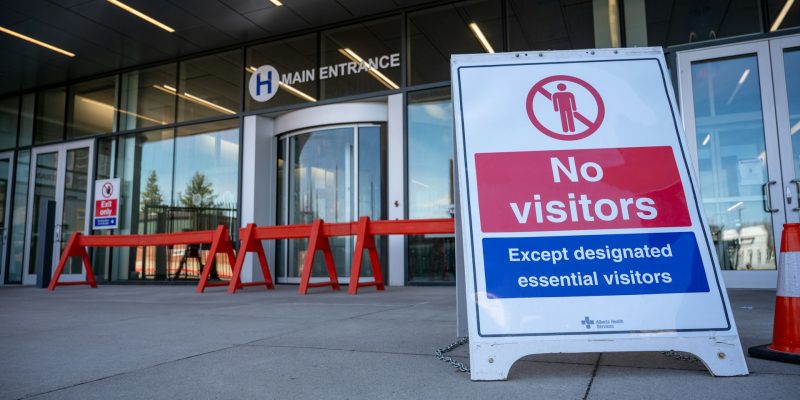In any workplace, facility, or public space, maintaining proper health and safety standards is of paramount importance. Not complying with relevant regulations can lead to injury, legal issues, financial penalties, and reputational damage. Effectively communicating safety rules, protocols, and warnings is a constant challenge.
This is where modern digital signage solutions provide a powerful advantage. Large, bright displays grab attention and can vividly convey Health and Safety (H&S) guidance in ways traditional static signs cannot. Leveraging the capabilities of digital signage means organisations gain a valuable tool for reinforcing a culture of compliance and vigilance regarding safety.
Grab Attention with Multimedia
Safety signs have only one method of communicating – text and symbols printed on physical placards. Digital screens blow past that limitation with rich multimedia capabilities.
Video Demonstrations
If you need to show proper procedures for operating machinery, handling hazardous materials or safely performing specific tasks, digital signs allow you to loop engaging video demonstrations that turn boring written instructions into vivid visuals. Viewers understand and retain the information far better.
Motion Graphics
Simple animations, motion graphics and dynamic text effects naturally draw the human eye in ways uninteresting static signs cannot. Combining visually striking animated elements with messaging creates compelling displays that naturally grab focus.
Multi-Zoning
Digital H&S signs can integrate multiple content zones within one screen. One area might cycle safety reminders while another display procedures, emergency protocols, or real-time alerts for rapidly updating situations.
Interactivity
Interactive touchscreen kiosks provide even greater depth of safety communication. Viewers can navigate multimedia resources, explore detailed reporting procedures, access support hotlines and more through an intuitive digital interface.
Reaching Larger Audiences
Just as important as eye-catching digital signage is positioning it prominently where the largest audiences can see it. Strategically placed safety screens ensure important messaging isn’t easily overlooked or brushed aside.
High-Traffic Areas
Locating digital H&S displays in high-visibility hallways, lobbies, and entrances where lots of foot traffic passes makes it easy to reach all workers, visitors, and guests with notifications. Placing screens outside hazardous areas reinforces awareness without relying on signage inside risky zones.
Public Spaces
For public venues like shopping centres, transportation hubs, and tourist attractions, digital signs throughout common areas broadcast safety guidelines, protocols, and emergency instructions effectively. Visitors can see real-time updates that physical signs lack.
Language Flexibility
Another advantage of digital over printed signage is the ability to communicate safety guidance in multiple languages. This guarantees the messaging reaches and is understood by all workers, guests, and visitors regardless of native tongues.
Language channels on digital signs can be customised to demographics, alternating languages automatically or set based on remote control. On-screen instructions explain how to change to your preferred language for viewing.
Real-Time Updates Across Networks
When an emergency occurs, rapid communication is crucial for keeping people informed and safe. Traditional static signs simply cannot provide the same speed and flexibility as digital signage.
Emergency Alerts
Networks of digital screens across facilities allow instant emergency alerts to be broadcast. These eye-catching pop-up notifications disrupt standard playlists with flashing updates on situations like hazardous spills, security threats or evacuations.
Details on unfolding scenarios get widespread visibility rapidly. Buildings don’t have to wait for slow printing and distribution of temporary paper notifications. Digital signage keeps people in the loop as situations develop.
Reflect Policy Changes
Regulations and safety policies are constantly evolving based on new findings, audits, and legislative changes. Instantly updating content across entire digital signage networks ensures the latest H&S information is consistently available whenever guidelines get revised.
Printed signs become obsolete and create compliance risks as soon as new policies render their information out-of-date. Digital screens eliminate that ongoing replacement hassle and cost. Safety messaging stays perpetually aligned with the most current standards through remote playlist updates.
Proof of Communication
Regulatory bodies and authorities want to see proof that proper workplace H&S communication and training occurs consistently. Documentation is essential for compliance audits, legal cases and controlling risks down the line.
Cloud-based digital signage software provides detailed logs and playback reports verifying what safety content displayed across screens and which specific messaging individual employees were exposed to over time. This proof of systematic communication helps to uphold compliance requirements. Printed materials cannot offer such comprehensive documentation records.
Integrated Systems
Digital screens do not exist in a vacuum either. They easily integrate with other systems powering smart facilities to provide centralised H&S status monitoring and rapid emergency override functionality.
Fire Alarms and Sensors
Link digital signage directly to fire alarm control panels and environmental sensors monitoring air quality, chemical levels, etc. Safety screens automatically react to system alerts by interrupting programming with audible emergency notifications and displaying appropriate evacuation guidance.
Security and Surveillance
Video surveillance feeds from across facilities send live camera angles to digital screens during crisis situations for real-time monitoring. Tie into access control and security system event logs for triggering customised safety alerts per each type of incident, too.
Building Management
Similarly, digital signage can pull data from building automation systems. Environmental controls, HVAC systems and equipment sensors feed status info that updates safety displays with hazard indicators, current safety conditions and work restriction warnings as situations change.
Law Signs
Ultimately, the role of digital screens in health and safety compliance goes beyond just disseminating advisories and guidelines effectively. When leveraged properly, a digital H and S law sign becomes a compliance resource that demonstrates adherence to workplace safety laws and industry regulations.
Providing proof of systematic safety messaging delivered consistently across their organisation means digital sign networks give companies solid documentation regarding their legal obligation to appropriately communicate H&S requirements. This evidentiary record stays updated automatically, ready for regulatory audits, legal cases, or insurance reviews.
In the end
Digital signage provides a powerful solution for effectively communicating health and safety information in the workplace and public spaces. The ability to rapidly update content across entire networks allows organisations to keep safety guidelines aligned with the latest regulations and respond with emergency alerts during critical situations. Perhaps most crucially, digital signage provides comprehensive documentation logs that serve as proof an organisation is meeting its legal obligation for properly communicating health and safety protocols. Overall, leveraging digital signage gives organisations a vital tool for reinforcing a culture of safety vigilance and mitigating risks.
Feature Photo by Graham Ruttan on Unsplash






Generalized anxiety disorder keeps me on edge. My mind spins on ‘what ifs,’ even when I know I shouldn’t worry. I try breathing exercises and grounding techniques, but it’s still tough. Talking to others with GAD here has been super comforting.